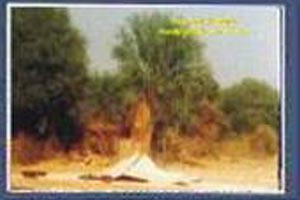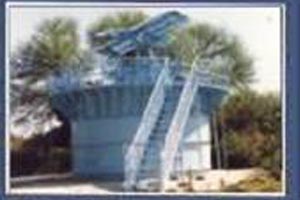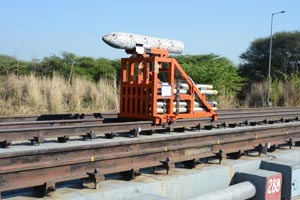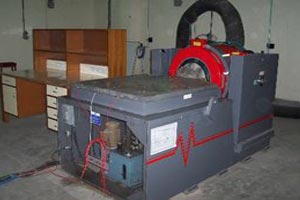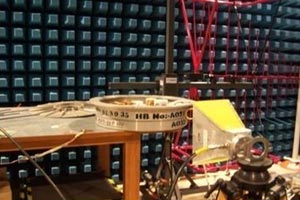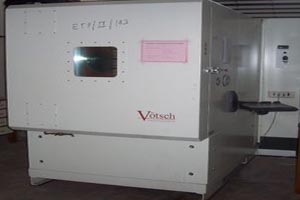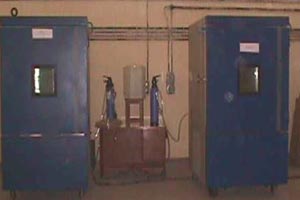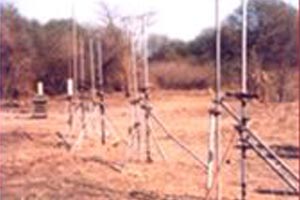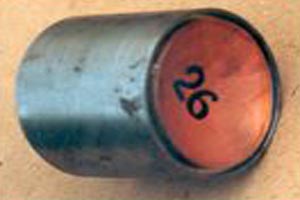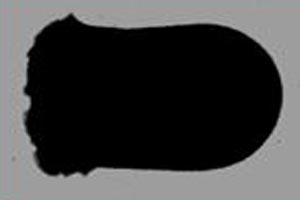Infrastructure Facilities
Performance Evaluation of Warheads
TBRL has instrumented facilities for generation of data for computation of lethality in terms of Mean Area of Effect. Evaluation of aircraft bombs, shells and missile warheads are conducted in horizontal/vertical strawboard layout to assess the following parameters in one firing.
- Mass distribution of fragments
- Spatial distribution of fragments
- Velocity of fragments
- Blast parameters
- Penetration performance of fragments in simulated targets
This data, thus generated, is used for assessing beam width, hit/perforation density, percentage perforation and spallation/deformation level of preformed fragments. For computation of absolute safety distance, fragmentation trials are carried out in a sand pit layout and in underwater fragmentation tank for determination of the heaviest fragment and mass distribution of fragments. The data generated in all the above trials is used for computation of following parameters.
- Mean Area of effect
- Absolute Safety Distance
- Normal Safety Distance
- Safety distances based on casualty criterion
Fragment Launching Guns
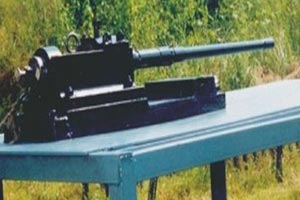
The laboratory is the nodal agency in the country capable of generating useful design data for entire spectrum of terminal ballistics from low velocity to high velocity impact of fragments including long rod projectiles. Smooth bore fragment launching guns of various calibres have been established for providing an economical, precise, accurate and quick method for assessing immunity aspects by firing natural fragments, pre-formed and scaled models, at desired striking velocities of varying mass, shape and size.
- 12.5 mm to 40 mm
- Velocity up to 2 km/s
Split Hopkinson Pressure Bar (SHPB) Facility
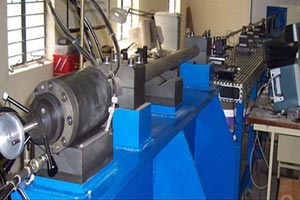
SHPB facility is the most commonly used method for determining material properties at high strain rates. The performance of materials at high strain rates is of interest for various applications such as structural, military and also for design of turbine blade, protective armour and other components subjected to dynamic loading
- Miragingsteel 20 mm bars
- Aluminium 20 mm bars
- High strain rate characterization up to 10000 per second
Ballistic Evaluation of Body Armour against Small Arms Ammunition
The laboratory offers its expertise and specialised facilities for ballistics evaluation of bullet-proof panels, helmets against various small arms ammunitions. Bullet proof (BP) panels such as BP jackets, sentry shelters, BP glass etc developed by various agencies are evaluated for their ballistic immunity against 9 mm carbine, 7.62 mm, AK-47 and 5.56 mm ammunition. Multiple spark photography is used to record the dynamic interaction of bullets with the panel.
High Speed Photography & Videography for Exterior Ballistics
High speed photography is equipped with high speed film, high speed digital colour video cameras and high resolution professional video cameras. These camera systems are used extensively for following tasks
- Fragment velocity measurement- Warheads, Bombs, Shells
- Testing of parachutes and impact delay fuses
- Photographic evaluation of Mine protective vehicles, anti mine boots, scaled down models of prototype fast breeder reactor, IGLOO structures
- Functioning of Multi mode grenade and Bund blast devices
Blast Instrumentation for Structural Response to Impulsive Loading
TBRL is the only laboratory in the country, which has indigenously developed state of the art instrumentation system for measuring blast wave parameters due to free air and underground explosions. Composite materials have been identified and techniques have been established for the design of blast resistant structures & systems. Above ground structures have been developed to contain the effect of internal explosions. Designing and test evaluation of buried structures has been carried out to provide protection to men & material . Facility of under water tank exists for carrying out studies on the damage to scaled structural targets against the effects of underwater explosions. The laboratory is fully equipped with blast / shock sensors and recording instrumentation systems for measurement of shock pressure, acceleration, particle velocity and strain.
Arena Test Facility for Lethality and Fragmentation Studies
For determination of efficiency and comparison of HE bombs/warheads against the specified targets. It has been set up for recording/collecting the data on detonation of high calibre bomb/shell/warhead. Data collected include mass distribution, spatial distribution and initial velocity of fragments and blast parameters such as peak over pressure, duration and impulse
High Speed Instrumentation
- Indigenous Blast Instrumentation Facility: For data acquisition and recording for the measurement of blast wave pressure time profile, ground shock, underwater blast and propagation of secondary shock waves.
- Digital Blast Data Recorder Facility: For the direct measurement of important blast wave parameters like peak over pressure, positive duration and impulse in digital form.
- Underwater Shock Pressure Tank: An underwater tank has been set up to undertake dynamic shock pressure measurement by recording pressure-time profile of shock wave and bubble pulses on detonation of scaled down HE charges, to investigate and compare the performance characteristics of different explosives and also to determine the heat of detonation of unknown explosives.
Photographic Facilities
Multi-Channel Spark Photography
For taking sequential pictures of projectiles in flight or during impact, and for studying the terminal effects and flight characteristics of small ammunition and scaled model projectiles.
High Speed Camera
For recording and analysing events having milli second duration such as projectiles stability in flight, deformation and fracture of materials, scab formation under impulsive loadings, defeat of armour by KE projectiles, velocity of fragments, vibration of guns, track side cameras in rail track rocket sled facility etc.
Penta Rail Track Rocket Sled National Test Facility (P - RTRS)
- Armament and aerospace systems under captive flight conditions
- Proximity testing using parallel tracks
Environmental Test Facilities
- Climatic
- Dynamic
- EMI / EMC testing as per MIL 461 E
- ISAT
Detonics Laboratory
- High Speed Streak Camera and Framing Cameras systems
- Electrical techniques for TOA, particle velocity and stress measurement
- Fibre optics techniques
Arena layout for lethality assessment of shells, bombs & warheads
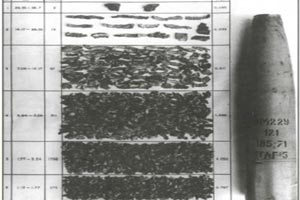
- Fragment velocity measurement
- Blast pressure measurements
- Fragment mass and spatial distribution
Instrumented Ballistics Range
- Body armour evaluation as per STANAG
- Response of semi-engineered products against small arm ammunition
High Speed Photography for Terminal Ballistics
- High speed video
- Film cameras
Explosive Processing Facilities
- Casting, machining and pressing
- Impact and Friction Sensitivity
- Well-equipped analytical laboratory
Instrumentation for Blast and Damage
- Quantification of blast in free air, underground and underwater
- Structural response to blast
- Displacement, acceleration, peak over pressure, particle velocity measurement




